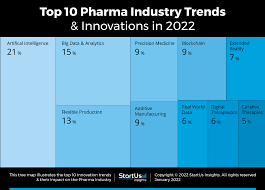Challenges for Pakistan Pharma Industry in 2023 – Part 3 – Asrar Qureshi’s Blog Post #773
Challenges for Pakistan Pharma Industry in 2023 – Part 3 – Asrar Qureshi’s Blog Post #773
Dear Colleagues! This is Asrar Qureshi’s Blog Post #772 for Pharma Veterans. Pharma Veterans welcome sharing of knowledge and wisdom by Veterans for the benefit of Community at large. Pharma Veterans Blog is published by Asrar Qureshi on WordPress, the top blog site. Please email to asrar@asrarqureshi.com for publishing your contributions here.
 |
| Photo Credit: Alena Darmel |
 |
| Photo Credit: Anete Lusina |
 |
| Photo Credit: Tima Miroshnichenko |
Cost of Compliance
Pharma industry is a highly regulated industry and regulations are applied at every step. The changes have occurred mostly in the last four decades, and we have witnessed it first hand. Compliance has increased both ways; new regulations have been put in place, and more stringent compliance is required. This has added to the cost of doing production. Compliance starts from raw materials and goes through production, storage, distribution and selling. Even marketing is covered but not strictly. Compliance means that testing must be done and recorded. For this purpose, every pharma company must buy relevant equipment, some of which are quite expensive. Even the basic, must-have, HPLC – High Performance Liquid Chromatography – costs around $60,000 which will translate to 16-17 million rupees at the current exchange rates. Reference standards are provided only by the United States Pharmacopeia and cost from $650 upwards for a small vial containing few grams. Furthermore, additional staff is needed to ensure compliance. Previously, environment was not a big concern, but now environmental requirements are also quite serious. All in all, complying with the present regulations is tough and costly.
Cost of Documentation
Since the implementation of CTD – Common Technical Document – format of dossier, the documentation has increased manifold. The increase has been due to two major reasons: one, previously the firms downloaded content from internet or took it from here and there and put it together in the dossier; it was easier and cheaper. Two, now the documentation requires that actual work is performed and then documented. Let us take just take one example. When a generic company applies for registration of generic version of a newly introduced drug, they must buy the packs of the original product for comparative testing, including comparative dissolution profile. The original packs must have been manufactured in the US or Europe etc. Many of these products are not available in Pakistan and must be procured from abroad. The international suppliers who supply such refence packs ask for thousands of US dollars which is beyond the reach of many companies. In addition, impurities testing must be done which is another cost running in millions of rupees. Stability must be done for six months and documented. These are some examples which show how the cost of documentation has escalated. None of these costs has a bearing on the consumer price granted by the pricing section of Ministry of Health, the parent ministry of DRAP.
Cost of Marketing
This cost is the prerogative of the firm and is not incurred due to any regulation.
Marketing is the broad terms that covers brand promotion, selling and distributing the drugs to retail market so that patients can buy these. This cost is driven by the market forces and is among the highest costs in a product.
For brand promotion, a team of brand manager is required which will design promotional strategies, promotional campaigns, and related materials. They will also participate in events for promotional purposes.
For selling, a large team of salespersons is needed because pharmaceutical selling cannot be done through media, it is not allowed. The salespersons go from customer to customer and sell according to the brand plan designed by the brand managers. They are also responsible for developing relations with customer to boost sales. The sales teams of medium to large size companies now run into hundreds. They travel up and down, they carry promotional materials, and they fulfill customer requests; all of this costs huge sums of money.
For distribution, a network of distributors is needed. The preferable way is to engage private distributors who would then supply to the market. These distributors are paid service charges which may range from seven to ten percent of the trade price. In addition, the stock has to be sent to them through some transport service or courier service, which is an additional, sizeable cost.
Marketing is the name of the game since a long time. Success in the marketplace is less dependent on the product and more on the marketing. In Pakistan, the local industry has overtaken multinational companies due to the strength of their marketing. Objections are raised on the rather lavish spending done by the larger companies, but all is fair in love, war, and business.
Cost of Marketing is among the most serious challenges for the industry. They have raised a monster through heavily investing on the customers which is not going away. In the current economic scenario, when the purchasing power of the patient is severely compromised, investment on customer shall only yield limited results. However, the fight goes on.
In the next post, we shall conclude this discussion.
To be Concluded……
Disclaimer: Most pictures in these blogs are taken from Google Images and Pexels. Credit is given where known; some do not show copyright ownership. However, if a claim is lodged at any stage, we shall either mention the ownership clearly, or remove the picture with suitable regrets.



Comments
Post a Comment